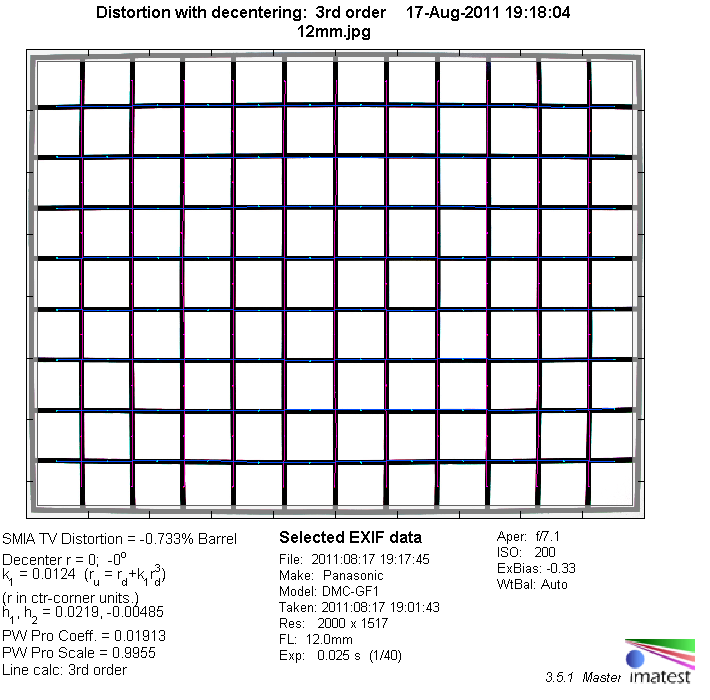|
Olympus M.Zuiko 12mm f/2 ED - Review / Test Report - Analysis |
|
Lens Reviews -
(Micro-)Four-Thirds
|
|
Page 2 of 3

Distortion
The M.Zuiko lens produces only a slight degree of barrel distortion (~0.7%) which is only rarely noticeable in field conditions. However, this is only a part of the story. Micro-4/3 images are auto-corrected according to the stored lens profile (lens firmware) - this is done either by the camera (JPEG) or by the more popular RAW-converters a la Photoshop. The "untouched RAW" results, showing the original capability of the lens, are much worse with a barrel distortion as extreme as ~5.4% which is rather disappointing for a prime lens.
Move your mouse cursor across the image to switch between the two variants (corrected/uncorrected RAW file).

Vignetting
Vignetting is not auto-corrected via firmware. The M.Zuiko produces quite a bit of vignetting (~1.3EV) at max. aperture which will be visible in many scenes. However, the issue is very well controlled from f/2.8 onwards.
MTF (resolution)
The Olympus lens is capable of delivering very sharp results. The center resolution is excellent straight from f/2 and the border quality follows on a very good level. The corner quality is just slightly worse at max. aperture but catches up with the borders from f/2.8 already. Diffraction has a impact at f/11 but the setting is still very usable. Avoid stopping down to f/16 though.
The centering quality of the tested sample was good but not outstanding.
Please note that the MTF results are not directly comparable across the different systems!
Below is a simplified summary of the formal findings. The chart shows line widths per picture height (LW/PH) which can be taken as a measure for sharpness.
If you want to know more about the MTF50 figures you may check out the corresponding Imatest Explanations
Chromatic Aberrations (CAs)
Lateral CAs are generally quite well corrected with an average CA pixel width of around 0.6px at the image borders. However, the issue increases substantially in the extreme corners where we've seen peaks of up to 1.5px. This is still not extreme but visible in field images. The CAs are not auto-corrected - at least not by our test camera nor by Photoshop ACR.
|